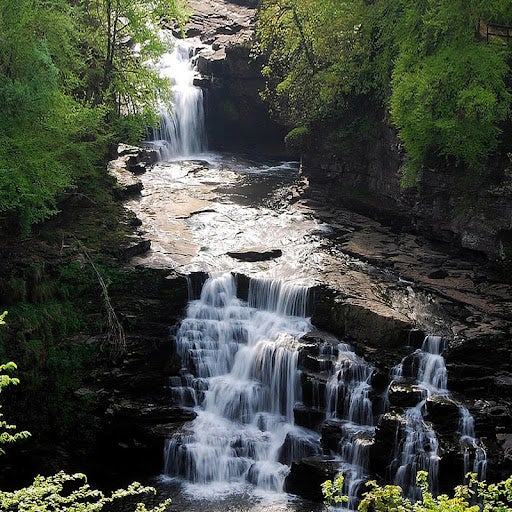

· By Dillon Griffin
Where Does Your Spring Water *actually* Come From?
Let’s set the stage: it’s a hot day and you run into the corner store to grab a cold bottle of water. You open the cooler door, scan your options, and grab a “spring water” because you like your water to taste like water and not spare change. Have you ever thought about where that spring water comes from or how your bottle of water has a trickle down effect on the community surrounding that spring?
A spring is a point at which water flows from an underground aquifer to the Earth’s surface. These springs can occur anywhere and have varying flow rates from a small trickle up to several hundred gallons per minute. Underground aquifers are fed by surface rainfall flowing through layers of soil, completing the water cycle from underground to cloud and back. This source seems uber sustainable since it comes from a source below the ground that none of us can see; and it is uber sustainable if this resource is managed properly. However, we live in a world where our natural resources can be easily mismanaged and the side effects of this can be devastating.
Some bottled water companies have faced SEVERAL lawsuits alleging over-siphoning millions of gallons of natural spring water to use for bottling - causing local farmers, residents, and businesses to face a severe water shortage. Go ahead and look it up, there are companies that go as far to drill and pump these natural springs to increase flow rates. Our natural resources are being depleted at a greater rate than Mother Nature can replenish them at; and that is a very scary thought. Can you imagine the fall out from one bad drought?
Now, insert RAIN. RAIN is sourced from a natural spring, in the rainiest county in the USA (70+ inches of rainfall a year on average) in the Appalachian Mountains. This means that our source is ACTUALLY uber sustainable. We harvest our water with no mechanical interference (i.e. no pumping or drilling, just Mother Nature at work) and our impact on our community is negligible, as the replenish rate far outweighs the usage rate.
So next time you’re in the corner store looking for a good spring water, consider where the water comes from and the people who also depend on that same spring.
#notplastic
